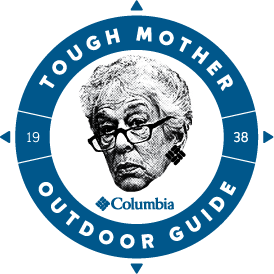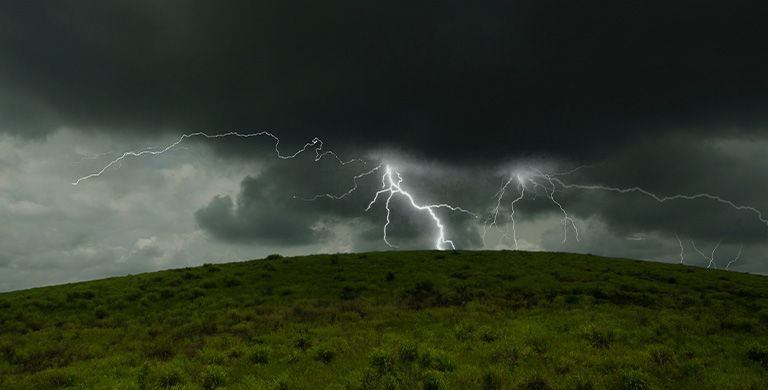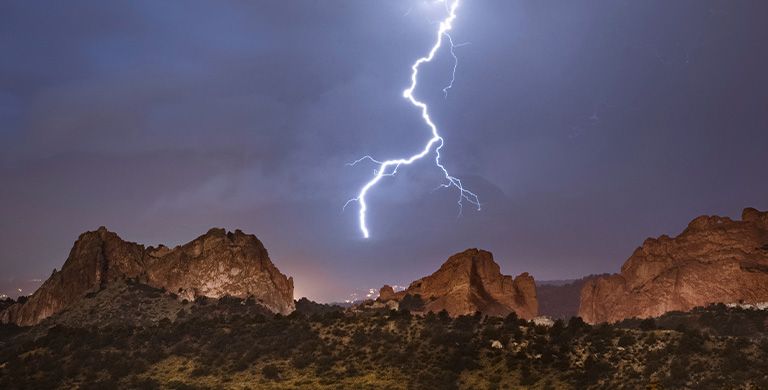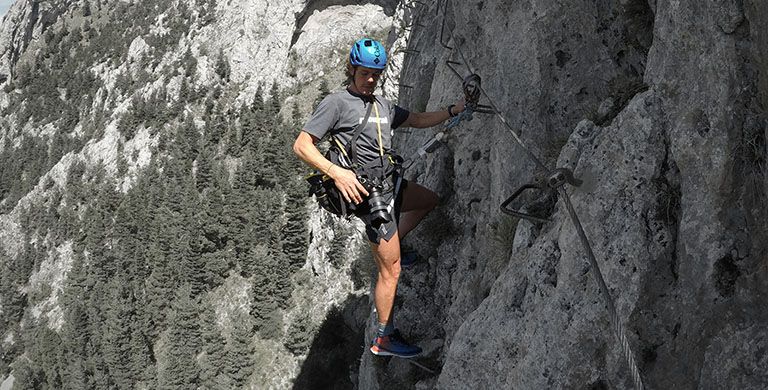OUTDOOR LIFE
Learning a New Sport on a Shoestring Budget
Get involved in the outdoors, make friends, and don’t break the bank.
BY NANCY BOUCHARD
It's not easy to pick up a new sport, regardless of age. Not only are many sports expensive, but they often require tons of training, or involve coordinating multiple people to make up a team. Plus, the barriers to entry can be psychological and physical, as well as financial. The plain truth is that many sports today have much higher startup costs than even a handful of years ago. However, there are still outdoor activities and sports that you can enjoy on a shoestring budget.
In the old days, one could head to a neighborhood basketball court, baseball diamond or soccer field and jump into a pickup game. No one cared what you were wearing or if you’d been coached since pre-school. Even public park and recreation fees have skyrocketed. But there are outdoor activities and sports that you can step into without flattening your wallet. Here are some outdoor sports that you can enjoy with little startup cost.
In the old days, one could head to a neighborhood basketball court, baseball diamond or soccer field and jump into a pickup game. No one cared what you were wearing or if you’d been coached since pre-school. Even public park and recreation fees have skyrocketed. But there are outdoor activities and sports that you can step into without flattening your wallet. Here are some outdoor sports that you can enjoy with little startup cost.

Fishing
Fishing is one of Mother Nature’s great gifts. Not only is it a tranquil pastime, but it’s a way of being one with nature. Whether you are fly fishing, spinning, trolling, or noodling with your bare hands, fishing is a fun reason to get outdoors. And depending on the type of fishing, it can be a mellow activity, or involve plenty of hiking and maneuvering to reach backcountry holes.
Fishing is surprisingly affordable. All states have Departments of Fish and Wildlife, with programs that help people get started fishing. Michelle Dennehy, Statewide Communications Coordinator for Oregon’s Department of Fish and Wildlife says that the state provides great information on how to get started fishing, crabbing, clamming and hunting. “Particularly for fishing, crabbing, and clamming, the cost of gear to get started is minimal,” explains Dennehy. “We offer a variety of classes on these topics, taught by Angler Education instructors and others. All our classes and workshops are posted and we add new ones all the time. The great thing about these classes is that we bring all the gear so you can try before you buy,” explains Dennehy.
Columbia Ambassador and expert angler, Cindy Nguyen, started fishing with her family on the jetties and beaches of Galveston. “I got my first rod and reel at about age 10,” she recounts. “Before that, I’d just go out with my dad with a cooler of drinks, food my mom packed for us and minimal gear. He’d bring a rod for himself. I actually started out fishing with a soda can, some mono and hooks, but you can get start-up equipment that’s more than a “blister pack” for under $100.”
If you want to start fishing, your first step is securing a fishing license; you can generally buy online or at a local bait and tackle shop. Single day fishing licenses are often less than $20, and kids under the age of 16 can fish for free in most states. Nguyen recommends talking with experts at a local sporting goods store for tips about what fish are biting, what methods of catching them are advised, and local programs to help get families out on the water.
Fishing is surprisingly affordable. All states have Departments of Fish and Wildlife, with programs that help people get started fishing. Michelle Dennehy, Statewide Communications Coordinator for Oregon’s Department of Fish and Wildlife says that the state provides great information on how to get started fishing, crabbing, clamming and hunting. “Particularly for fishing, crabbing, and clamming, the cost of gear to get started is minimal,” explains Dennehy. “We offer a variety of classes on these topics, taught by Angler Education instructors and others. All our classes and workshops are posted and we add new ones all the time. The great thing about these classes is that we bring all the gear so you can try before you buy,” explains Dennehy.
Columbia Ambassador and expert angler, Cindy Nguyen, started fishing with her family on the jetties and beaches of Galveston. “I got my first rod and reel at about age 10,” she recounts. “Before that, I’d just go out with my dad with a cooler of drinks, food my mom packed for us and minimal gear. He’d bring a rod for himself. I actually started out fishing with a soda can, some mono and hooks, but you can get start-up equipment that’s more than a “blister pack” for under $100.”
If you want to start fishing, your first step is securing a fishing license; you can generally buy online or at a local bait and tackle shop. Single day fishing licenses are often less than $20, and kids under the age of 16 can fish for free in most states. Nguyen recommends talking with experts at a local sporting goods store for tips about what fish are biting, what methods of catching them are advised, and local programs to help get families out on the water.

Hiking
Hiking is an excellent way to get exercise, enjoy nature, relieve stress and anxiety, and hang out with fellow hikers. The startup cost for hiking is quite low. Maggie Paikon, spokesperson for the American Hiking Society says, “You can start with the gear you have, and start right where you are — we like to say you can start hiking simply by walking out of your front door and deciding to go.”
For equipment, you’ll need a sturdy pair of rubber-soled shoes that provide traction on the trail. Avoid slick-soled tennis or basketball shoes. You can hike/walk in most any footwear but stay away from leather-soled shoes, high heels, flip flops and flimsy fashion-first items.
In terms of apparel, wear loose fitting pants, a T-shirt and bring along a vest or lightweight raincoat or jacket. Remember that people have walked and hiked since the beginning of time; while you may eventually want to invest in sport specific gear, don’t let a lack of it keep you from heading out the door. While we have technical fabrics and insulation now that are lighter, warmer, more breathable, and more packable than ever before, if you are not going far into the backcountry, start with what you own, and then add items that you need. A small backpack can come in handy for your extra layer and water bottle.
Start slow. If you haven’t walked a lot, opt for a trail at a local park. Even walking a half mile is better than not walking at all. Sometimes it is easier to set a time goal, rather than distance. For example, plan on walking for fifteen minutes (and then turn around and walk the same distance home or to your car). You can walk solo, or bring your dog, a friend, or even better yet, join a hiking club. Just make sure you let someone know where you’re going and when you expect to return.
We like the American Hiking Society for great advice, a multitude of volunteer opportunities, and a bountiful list of trails. There are also regional clubs, like the Outdoor Adventure Club in San Francisco. It’s an accredited guide service and social club, with trips led by volunteers and experts. Sign up for events and hikes as a non-member or get an annual standard membership for $199, which includes deep discounts on activities, skills courses and use of gear. The organization offers plenty of hiking in the greater San Francisco area, as well as cool climbing, skiing, rafting, and even mountain biking trips. Membership to the Colorado Mountain Club is as low as $85, and you get up to 70 percent off many equipment and apparel brands. The group is designed to support mountain education, adventure, and conversation, plus you’ll meet like-minded people. On the east coast, the Appalachian Mountain Club (AMC) has been helping people get outdoors since 1876. Individual membership is $50, half that price if you’re under 30 or over 70, and you get access to thousands of activities and discounts on AMC-owned lodges and campgrounds. If you live in Canada, or are just visiting, you are in luck. Canada has some of the most inclusive outdoor clubs in the world. The Toronto Outdoor Club is free to join, and hosts low-cost courses, trips and events in the Ontario region and beyond.
For equipment, you’ll need a sturdy pair of rubber-soled shoes that provide traction on the trail. Avoid slick-soled tennis or basketball shoes. You can hike/walk in most any footwear but stay away from leather-soled shoes, high heels, flip flops and flimsy fashion-first items.
In terms of apparel, wear loose fitting pants, a T-shirt and bring along a vest or lightweight raincoat or jacket. Remember that people have walked and hiked since the beginning of time; while you may eventually want to invest in sport specific gear, don’t let a lack of it keep you from heading out the door. While we have technical fabrics and insulation now that are lighter, warmer, more breathable, and more packable than ever before, if you are not going far into the backcountry, start with what you own, and then add items that you need. A small backpack can come in handy for your extra layer and water bottle.
Start slow. If you haven’t walked a lot, opt for a trail at a local park. Even walking a half mile is better than not walking at all. Sometimes it is easier to set a time goal, rather than distance. For example, plan on walking for fifteen minutes (and then turn around and walk the same distance home or to your car). You can walk solo, or bring your dog, a friend, or even better yet, join a hiking club. Just make sure you let someone know where you’re going and when you expect to return.
We like the American Hiking Society for great advice, a multitude of volunteer opportunities, and a bountiful list of trails. There are also regional clubs, like the Outdoor Adventure Club in San Francisco. It’s an accredited guide service and social club, with trips led by volunteers and experts. Sign up for events and hikes as a non-member or get an annual standard membership for $199, which includes deep discounts on activities, skills courses and use of gear. The organization offers plenty of hiking in the greater San Francisco area, as well as cool climbing, skiing, rafting, and even mountain biking trips. Membership to the Colorado Mountain Club is as low as $85, and you get up to 70 percent off many equipment and apparel brands. The group is designed to support mountain education, adventure, and conversation, plus you’ll meet like-minded people. On the east coast, the Appalachian Mountain Club (AMC) has been helping people get outdoors since 1876. Individual membership is $50, half that price if you’re under 30 or over 70, and you get access to thousands of activities and discounts on AMC-owned lodges and campgrounds. If you live in Canada, or are just visiting, you are in luck. Canada has some of the most inclusive outdoor clubs in the world. The Toronto Outdoor Club is free to join, and hosts low-cost courses, trips and events in the Ontario region and beyond.

Birding
Birding might be the most accessible outdoor activity available. We’d even call it a sport. No matter if you live in the country, city or somewhere in between, you will see birds. Let’s get one thing straight; if you consider yourself a birder, you are a birder. Diego Calderón-Franco, a Colombia-based biologist and international birding expert/guide, says that “Birding is for everyone and it doesn’t require money to get started. All you need is time, curiosity, and eagerness. You can see birds by looking out of your window, or in your back yard or a local park. And most people have a cell phone with a zoom lens, which lets you see the bird more closely, and then share with your friends, or upload to social media.” Calderón-Franco suggests using EBird, an educational app that allows you to be a citizen biologist. “While you can get very involved with birding, to get started, you really only need curiosity, and to rely on your own eyes and ears,” says Calderón-Franco.
There are many levels of birding, from simply observing them, to using binoculars, to sketching species and bird photography to The Big Year. You can look for birds from your window, during a hike or on a stroll through your neighborhood. If you have a park, wetland, forest, river or other body of water nearby, you can bet that there will be plenty of birds to watch. All you need to do is look, wait and listen. The next step is to figure out how to identify them.
You can generally get an inexpensive Field Guide from a second-hand bookstore or online; Sibley, Peterson, or National Geographic are all good and include birds in North America. Sometimes it is best to start small, with a state or local birding guide. There are also dozens of birding apps that you can download onto your smartphone. The Audubon Bird Guide is free; not only is it a field guide to more than 800 bird species in North America, but it is designed to help you identify birds, and keep track of the birds you’ve seen. The Merlin Bird Guide App is also fun as it helps to identify birds by their songs, which is nice for when you can’t quite get close enough for a good look.
Once you start looking at birds, you’ll probably want to get a pair of waterproof binoculars. You can generally buy a decent pair at a sporting goods store for around $100. There are also a couple of great “refurbished/pre-owned” sites like Explore Scientific Certified Pre-Owned and Alpen Optics that sell quality gear for low prices. It is fun to share photos of birds. Start with your cell phone, but you can also upgrade to an inexpensive point and shoot camera.
There are many levels of birding, from simply observing them, to using binoculars, to sketching species and bird photography to The Big Year. You can look for birds from your window, during a hike or on a stroll through your neighborhood. If you have a park, wetland, forest, river or other body of water nearby, you can bet that there will be plenty of birds to watch. All you need to do is look, wait and listen. The next step is to figure out how to identify them.
You can generally get an inexpensive Field Guide from a second-hand bookstore or online; Sibley, Peterson, or National Geographic are all good and include birds in North America. Sometimes it is best to start small, with a state or local birding guide. There are also dozens of birding apps that you can download onto your smartphone. The Audubon Bird Guide is free; not only is it a field guide to more than 800 bird species in North America, but it is designed to help you identify birds, and keep track of the birds you’ve seen. The Merlin Bird Guide App is also fun as it helps to identify birds by their songs, which is nice for when you can’t quite get close enough for a good look.
Once you start looking at birds, you’ll probably want to get a pair of waterproof binoculars. You can generally buy a decent pair at a sporting goods store for around $100. There are also a couple of great “refurbished/pre-owned” sites like Explore Scientific Certified Pre-Owned and Alpen Optics that sell quality gear for low prices. It is fun to share photos of birds. Start with your cell phone, but you can also upgrade to an inexpensive point and shoot camera.

Pickleball
While you’ve probably heard of tennis and perhaps played in junior high, high school or a summer parks and rec program, tennis can be an expensive sport to play as an adult. Belonging to a tennis club takes money, and if you rely on free neighborhood courts, it can be difficult to find a partner. Plus, there’s a lot of running involved. There’s a reason pickleball has been America’s fastest-growing sport for three years running—up 233 percent from 2020 to 2023, according to the Sports and Fitness Industry Association. While tennis can take a year or two to gain sufficient skill level, pickleball is a sport for anyone who just wants a bit of exercise, companionship and fun. There are pickleball clubs springing up everywhere, not just in retirement communities. And many former tennis courts are being converted to keep up with the pickleball craze.
“The game is multi-generational, easy to learn, fun and affordable,” says Judy Leand, contributing editor, Racquet Sports Industry Magazine. “To get started, all that’s really needed are a paddle and a pair of court shoes, which is an outlay of about $130. If you already have the shoes, then you’ll just need a paddle.”
As for court time, with upwards of 12,000 known locations and 52,000-plus pickleball courts across the U.S., and more on the way, there are many convenient and affordable options on offer. “There’s most likely a rec center, school, park, or YMCA near you with new player programs that will even provide or lend paddles to beginners,” notes Leand. “The sport is much easier to learn than tennis, with fewer rules. And the courts are smaller, so there’s not that exhaustive running back and forth.”
“The game is multi-generational, easy to learn, fun and affordable,” says Judy Leand, contributing editor, Racquet Sports Industry Magazine. “To get started, all that’s really needed are a paddle and a pair of court shoes, which is an outlay of about $130. If you already have the shoes, then you’ll just need a paddle.”
As for court time, with upwards of 12,000 known locations and 52,000-plus pickleball courts across the U.S., and more on the way, there are many convenient and affordable options on offer. “There’s most likely a rec center, school, park, or YMCA near you with new player programs that will even provide or lend paddles to beginners,” notes Leand. “The sport is much easier to learn than tennis, with fewer rules. And the courts are smaller, so there’s not that exhaustive running back and forth.”

Disc Golf
Disc golf has gone mainstream. There are about 9,000 disc golf courses in the US and more than 14,000 worldwide, nearly all of them free. You don’t need a Grateful Dead T-shirt, golden lab named Denali, and cut offs to play disc golf, in fact, all that's required is a disc, which costs from $10 to $30. Sure, it’s nice to have a pair of trail or running shoes, but if conditions are right, you can play in flip flops. If there’s a college, university or parks and rec department in your town, chances are you have a disc golf course. The sport develops great hand-eye coordination. You can play solo or with a team. It’s a low-impact sport, and there's no time limit for the course. Courses range from easy and short to longer, and more physically intensive. While your first outing might be challenging, especially if you’ve never tossed a frisbee, relax, you’ll pick up the technique quickly, and the community is known for being friendly and welcoming. UDisc.com is a good starting place for info about courses near you and fun community events.

Jogging
As kids, most of us ran. It could have been chasing other kids around the block, through sprinklers on hot summer days, or during an explorational foray into Track and Field. Jogging, a slower, more sustainable version of running, is a terrific sport, and it is easy to get started. And you don’t need to be working on a sub eight-minute mile pace. All you need is a good pair of running shoes, shorts, tights or sweats and a T-shirt. Add a ball cap for sunny days and a water bottle for longer excursions. We could write books about trail running tips and techniques, but you don’t need to get caught up in the details unless you are focused on specific training goals or races. Just getting out for a mile or two at a slow pace can do wonders for your physical and mental health.
Whatever your budget, age or level of experience, there’s a way to explore the outdoors, stay fit and make friends. When you’re considering a new sport, think baby steps. No matter how good a person gets at an activity, everyone starts out as a beginner. Get involved as it is a great way to stay fit, find a community, and have some fun.
Whatever your budget, age or level of experience, there’s a way to explore the outdoors, stay fit and make friends. When you’re considering a new sport, think baby steps. No matter how good a person gets at an activity, everyone starts out as a beginner. Get involved as it is a great way to stay fit, find a community, and have some fun.
Find the perfect gear for all your outdoor adventures and activities with gear from Columbia Sportswear.



